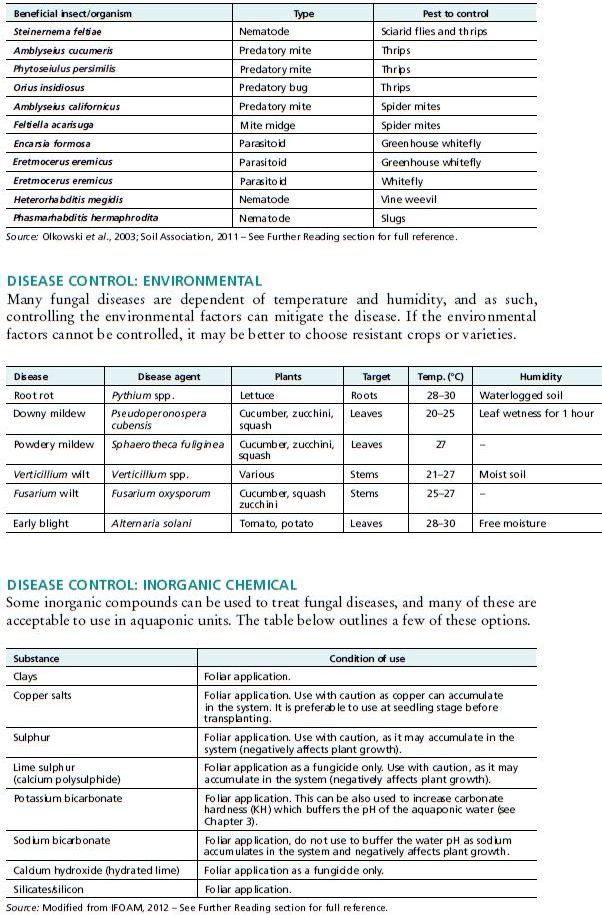Appendix 2 - Plant pests and disease control
Aquaponic pest management can benefit from most of the common biological methods used in organic agriculture. However, it is important to remember that a strategy against pests should be planned according to the insects occurring in that particular area and the crop being cultivated during a specific season and a given environment.
PEST CONTROL: REPELLENTS, SOFT-CHEMICALS AND PLANT-DERIVED INSECTICIDES
Soft-chemical alternatives to industrial pesticides can also be applied to deter pests. Organic mixes consisting of crushed garlic, pepper, soap and insecticidal oils can all be used to remove the threat of pests. If using soaps, make sure to use natural soaps, otherwise potentially harmful chemicals typically found in synthetic soaps can make their way into the water. Soaps can damage fish gills, so care should be used not allow too much to enter the water. Thorough coverage of the plant is necessary for effective pest control. Although observed and empirical knowledge on many of these methods. suggests they work, there has not been systematic scientific research on their efficacy. Moreover, the medicinal properties of vegetables extracts used would suggest caution. in their use because of toxicity risks to the fish.
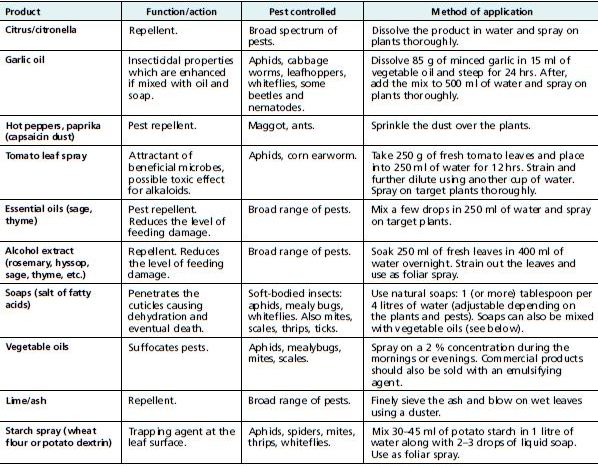
Source: Ellis and Bradley (1996) – See Further Reading section for full reference.
PEST CONTROL: INSECTICIDES, PLANT-DERIVED
Biological insecticides deserve particular attention in aquaponics as not all of them are suitable for fish. Although biological insecticides are classified for organic use, most of them are toxic to fish and to beneficial insects. The table below listed a number of common insecticides and critical information for their safe use.
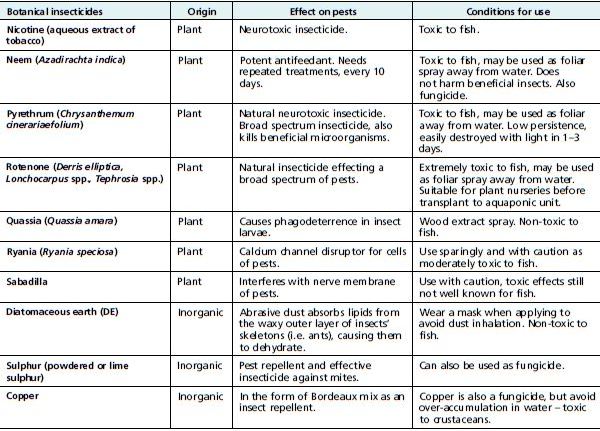
Source: Copping, 2004; Shour, 2000; Soil Association, 2011; IFOAM, 2012 – See Further Reading section for full reference.
PEST CONTROL: BENEFICIAL INSECTS
Beneficial insects can be used to control pests. This method is more applicable for large producers, as the cost can be prohibitive on a small-scale. The choice of insect must be matched to the pest insect and environmental conditions.
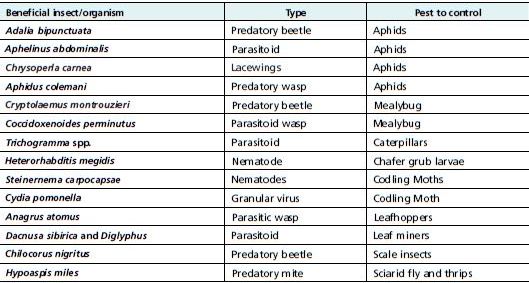
COMPANION PLANTING CHART
Companion planting is a small-scale intercropping method that is very common in organic and biodynamic horticulture. The justifying theory is that the association of different plants has either a mechanical, repellent or dissuasive effect against pests. In addition, some beneficial effects on the complex soil/plant agro-ecosystem can be encouraged by the release of substances or root exudates from beneficial plants. Although some degree of pest control has been scientifically verified, the degree of success depends on: the level of pest infestation, the crop density, the ratio between crops and beneficial plants, and the specific planting times. Companion planting can be used in combination with other strategies within an integrated plant and pest management to obtain healthier crops in aquaponic systems.
The table below gives a general overview of possible combinations according to biodynamic principles. Specific information can be obtained easily from the detailed literature available on organic and biodynamic agriculture.
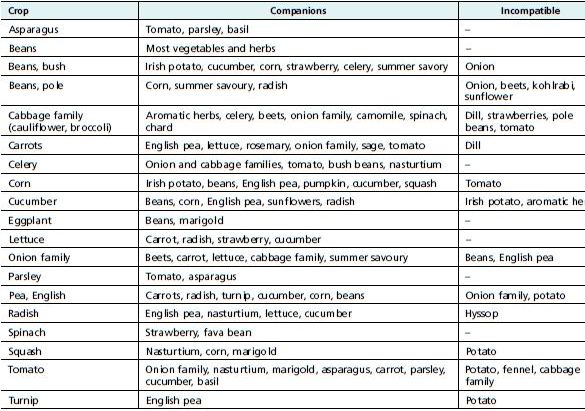
Source: http://permaculturenews.org/2011/12/02/companion-planting-information-and-chart/
